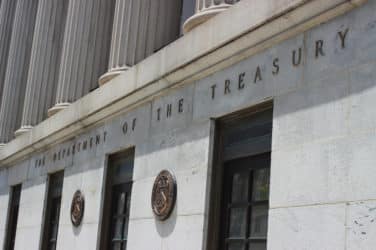The U.S. Securities and Exchange Commission has extended its Fixed Income Market Structure Advisory Committee’s charter for a third one-year term, Chairman Jay Clayton announced during the committee’s penultimate meeting in Washington, D.C.
“Since the FIMSAC was created in November 2017, each meeting has been insightful and constructive,” he said. “FIMSAC has issued eight recommendations on seven topics, with two more recommendations to be considered today. That is productive by any measure.”
Chairman Clayton also noted that Carole Brown, who was the CFO of the City of Chicago, and Amar Kuchinad, who was the Chief Strategy Officer at Trumid Financial, would be vacating their roles on the advisory body.
Potential issue FIMSAC might address throughout the next 18 months include trading in the corporate bond gray market, improving trade settlement to expand market participation in all-to-all trading, and modernizing the investment manager’s best-execution guidelines.
The topics are nowhere near a state where the Technology and Electronic Trading Subcommittee could make a recommendation, according to Rick McVey, CEO of MarketAxess and Subcommittee chair.
“We are at very early stages in brainstorming on other areas of the fixed income market structure where we could recommend improvements,” he added.
The ETF and Bond Funds Subcommittee floated two new topics that it recommended that FIMSAC address in future meetings.
The Subcommittee would like FIMSAC to identify potential market-structure improvements that would reduce step-away risk, or the risk that authorized participants ceasing their arbitrage roles during a stressed market, such as imposing affirmative obligations on authorized participants to mitigate the risk, said Rachel Wilson, senior vice president, finance at Iron Mountain and member of the ETF and Bond Funds Subcommittee.
Secondly, the Subcommittee wanted to highlight the implications of index construction methodologies for bond prices and management performance and identify possible methodological improvements.
“Academic research suggests that these rebalancing trades are larger impacts on the underlying bond prices that are non-fundamental in nature,” said Wilson. “Further, benchmarking to an index causes the rebalancing funds to trade frequently in a predictable manner, thus imposing trading costs that hurt fund performance.”






